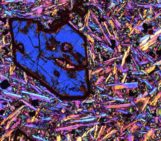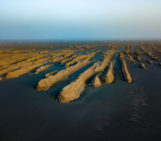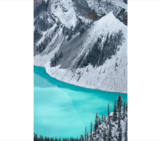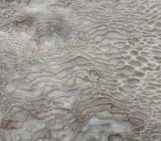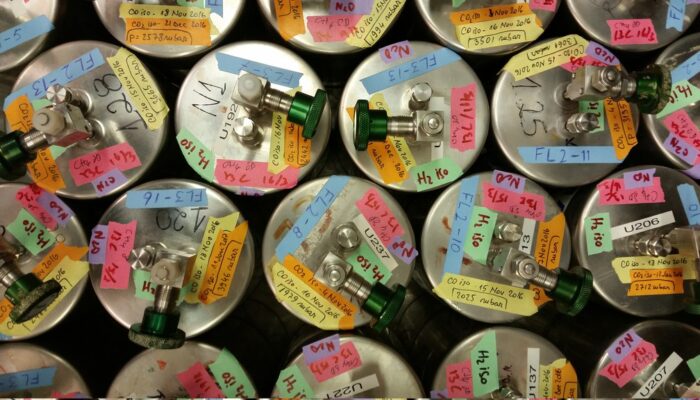
I’ve taken many photos on fieldwork, everywhere from Malaysia to Antarctica but this particular photo was taken in my ‘home’ lab at the University of East Anglia (UEA) in Norwich, UK. Atmospheric scientists collect air samples canisters such as these from around the world: from high altitude research aircraft (such as the Geophysica), long-term measurement time series (such as Cape Grim) or field campaigns in urban and rural environments.
At UEA we measure these whole air samples for a suite of up to 50 trace gases, covering all the major ozone depleting substances and non-CO2/CH4 greenhouse gases. We measure compounds at ‘parts per trillion’ (ppt) level or below in samples as small as 20 ml. It’s very hard to visualise 1 ppt… but it’s equivalent to about one second in 32,000 years measured in a sample that could fit in an egg cup.
Often these air samples are also analysed at other labs in Europe and other parts of the world, adding to the total number of compounds and isotopes we can quantify. Samples such as these have helped us identify new threats to ozone recovery and to quantify emissions of climatically-important trace gases such as HFCs and PFCs. To measure such trace, trace gases requires an instrument that is both large and temperamental. As such, it doesn’t (well can’t) leave the lab and we bring all the samples back to it. Stopping to imagine where the samples came from and how rare and special they can be (air from 30 km high or from deep in an ancient ice core!) helps me get through the long and labour intensive days in the laboratory.
By Emma Elvidge, University of East Anglia, UK
Imaggeo is the EGU’s online open access geosciences image repository. All geoscientists (and others) can submit their photographs and videos to this repository and, since it is open access, these images can be used for free by scientists for their presentations or publications, by educators and the general public, and some images can even be used freely for commercial purposes. Photographers also retain full rights of use, as Imaggeo images are licensed and distributed by the EGU under a Creative Commons licence. Submit your photos at http://imaggeo.egu.eu/upload/.

